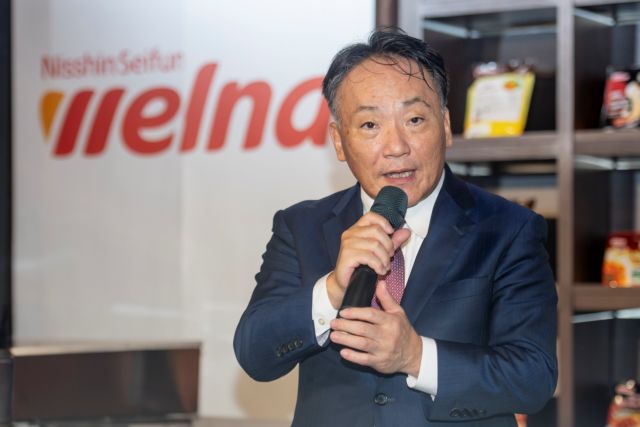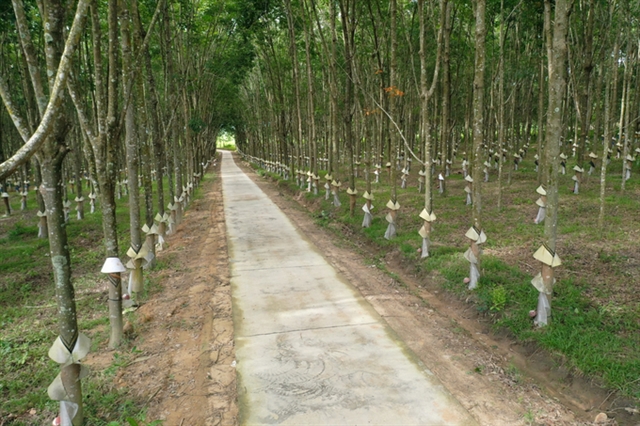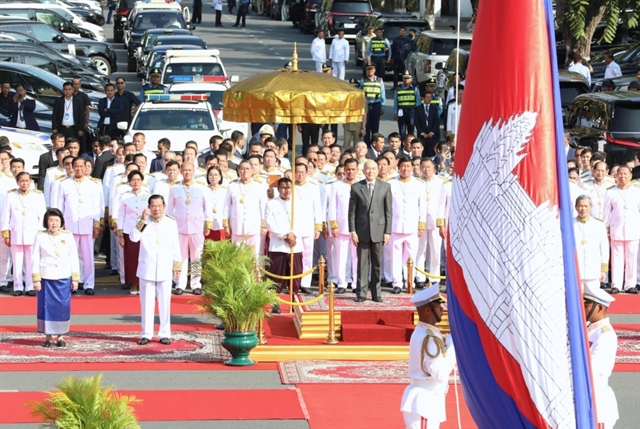 Economy
Economy


|
| Vietnam Rubber Group targets all of its rubber cultivation area and production forests to obtain national and international sustainable forest management certifications by 2050. — Photo nongnghiep.vn |
HCM CITY — Vietnam Rubber Group Joint Stock Company has unveiled its Green Growth and Sustainable Development Strategy for 2023–30 that encompasses three goals: economic development, environmental protection and social responsibility.
This strategy builds upon VRG's successful sustainable development initiatives from 2019 to 2023, aligning with global sustainability trends and contributing to reducing greenhouse gas emissions, in line with the move towards a carbon-neutral economy.
VRG manages nearly 300,000ha of rubber trees in Việt Nam, 87,000ha in Cambodia and nearly 300,000ha in Laos, annually producing 320,000 tonnes of rubber.
The strategy targets a minimum 15 per cent reduction in greenhouse gas emissions from energy use by 2030 and 30 per cent by 2050.
VRG also plans to greenify its supply chain to meet the stricter sustainability requirements from customers.
The goal is for 60 per cent of its rubber cultivation area and production forests to obtain national and international sustainable forest management certifications (VFCS/PEFC/FSC) by 2030 and 100 per cent by 2050.
By 2030 all rubber latex processing factories will achieve chain of custody certification, and all manufacturing plants (rubber latex, wood, rubber-based industrial products) by 2050.
Its production will transition to green practices, incorporating renewable energy, energy-saving devices, water-saving solutions, wastewater reuse, and minimising hazardous waste release.
For this VRG will leverage technical solutions to grow rubber sustainably, minimise soil erosion and adopt environment-friendly solutions to combat diseases in rubber trees.
It will review and upgrade production technologies, promoting the use of new production technologies and green service areas.
The emphasis will be on applying green technologies and production management systems aligned with national and international best practices to conserve resources, reduce emissions, and safeguard the environment.
Intercropping other crops with rubber will be promoted to ensure bio-diversity and improve land use efficiency.
VRG will utilise GIS technology to efficiently manage trees’ ages and productivity and assess carbon reserves in its rubber forests for carbon credit commercialisation.
It provides smallholder farmers with scientific and technical support and high-yield varieties to improve productivity and quality of latex and trace product origins, and purchases rubber from them at fair prices.
In terms of financial resources, VRG plans to leverage supportive policies, financial incentives, green insurance, and investment solicitation. It aims to participate in the carbon market, developing an emissions trading system based on market mechanisms.
In addition to its own capital, VRG will also mobilise financial resources from domestic and international funds and investors, prioritising preferential loans and technical support from international and non-governmental organisations for green growth and sustainable development. — VNS



